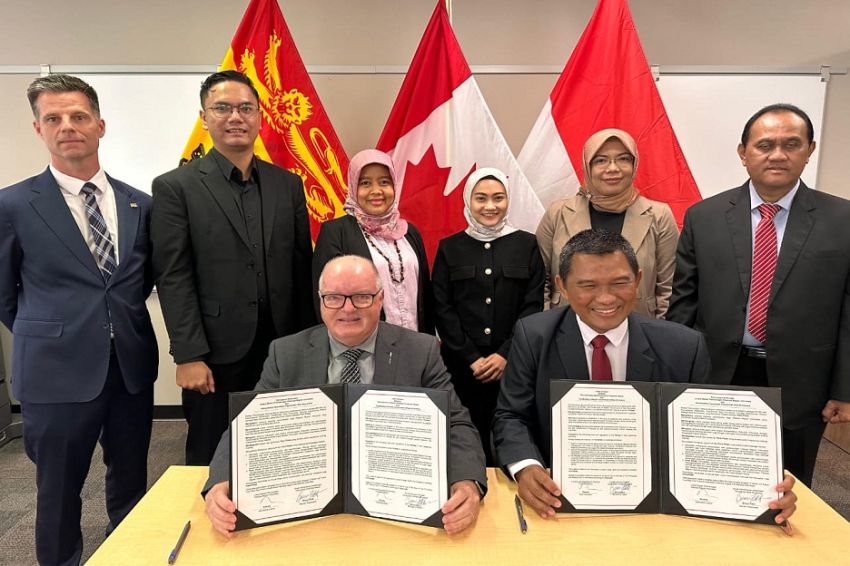The Tianmu-1 weather constellation satellite was launched on March 22, 2023 by the Guizhou-1A carrier rocket from the Jiuquan Satellite Launch Site in northwest China. (Photo by Wang Jiangbo/Xinhua)
GENEVA, March 23 (Xinhua) — Advances in meteorological science and technology in China benefit not only its own people but also the whole world, said the deputy secretary-general of the World Meteorological Organization (WMO), Zhang Wenjian.
China’s meteorological science and technology has achieved a leading position in the world, especially in meteorological satellites, Zhang said in an interview with Xinhua.
Zhang noted that the country’s climate concept is characterized by openness, inclusiveness and sharing.
Since its official seat at WMO was restored in 1972, China’s role in the organization has gone through four stages: integration, contribution, participation and leadership, according to Zhang.
After initial hands-on integration, China quickly contributed to the WMO monitoring system, which relies on international cooperation to build a global operational system.
“Without WMO data, no country can make forecasts for more than one day,” Zhang said. “With observational data provided by China, the Global Weather Data Observation Network lives up to its name. Sharing weather data globally from the 9.6 million square kilometer area of China is very important for WMO and global weather forecasting.”
Over the past 20 years, China has rapidly taken a leading role in WMO, thanks to its scientific and technological progress and the concept of climate development.
According to Zhang, the WMO needs data from about 1,000 vertical atmospheric observation balloons every day, with China contributing about 100, or 10 percent. Meanwhile, WMO’s satellite program incorporates about 30 operational satellites, including seven or eight satellites from China. This basic monitoring system is a very powerful tool for monitoring weather hazards.
Weather satellites are another strong point of Chinese technology. In 2017, WMO and seven countries in Asia and Oceania, including China, Japan, South Korea, India, Australia, Russia and India, agreed on the sharing mechanism meteorological satellite users in Asia and Oceania, which facilitates the provision of critical meteorological satellite services. . Many countries in the southern hemisphere do not have their own weather satellites.
“In the event of a major weather disaster or major international political incident, satellite weather services can be provided with a monitoring frequency of every minute instead of every half hour to more accurately respond to weather conditions such as typhoons “, said Zhang. .
WMO encourages countries with meteorological satellites to provide monitoring services consistent with those of other countries facing major weather events. China was the first to answer that call and has now signed agreements with 28 countries to provide weather monitoring services when needed.
Behind all this are the technological advancements of the past two decades and the growing number of weather satellites in China.
China now has four geostationary weather satellites in service, covering half of the Earth’s surface, Zhang said. Its Fengyun-4B weather satellite can provide high-resolution observations of 250 meters every minute.
Citing the example of last year’s G20 summit in Indonesia, Zhang said China’s weather satellites have benefited the world. He said China provides satellite weather monitoring services designed to meet Indonesia’s demand for better weather forecasts and monitoring results to ensure the flight safety of participating heads of state.
“It shows that China’s weather technology serves not only its national economy, but also security during major international political events,” Zhang said.
Last year on World Meteorological Day, UN Secretary-General Antonio Guterres called on every human being on Earth to establish a UN climate and weather forecasting system over the next five years to protect against increased extreme weather events and climate change.
“China continues to help less developed countries with meteorological services, personnel training and the establishment of early warning systems,” Zhang said.
“Early warning is based on observational data. On average, WMO collects data from about 10,000 ground stations per day, of which about 500 are Chinese contributions, accounting for 5 percent of the global total,” Zhang said.
Since 2013, China has helped seven African countries develop ground-based weather observation networks, disaster mitigation and prevention systems, and maritime satellite reception systems in coordination with WMO.
“China’s relentless assistance in meteorological services, especially for less-developed countries, has been recognized and appreciated by most developing countries,” Zhang said, adding that WMO hopes all countries with meteorological satellites will follow by creating jobs at the same time for development. and less developed countries. ■

“Amateur problem solver. Hipster-friendly alcohol lover. Beer buff. Infuriatingly humble tv geek.”






